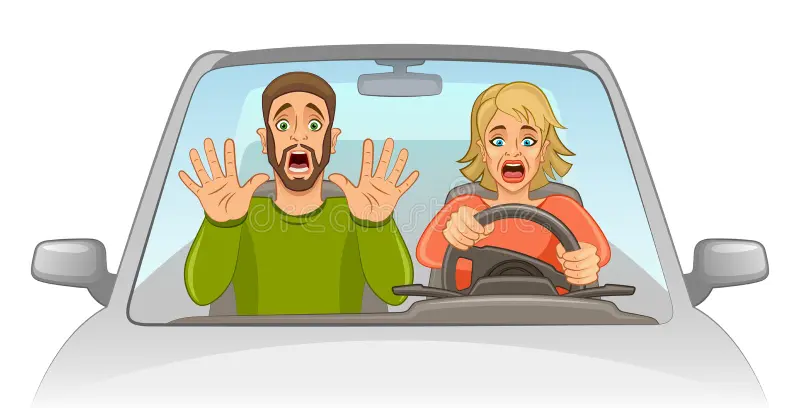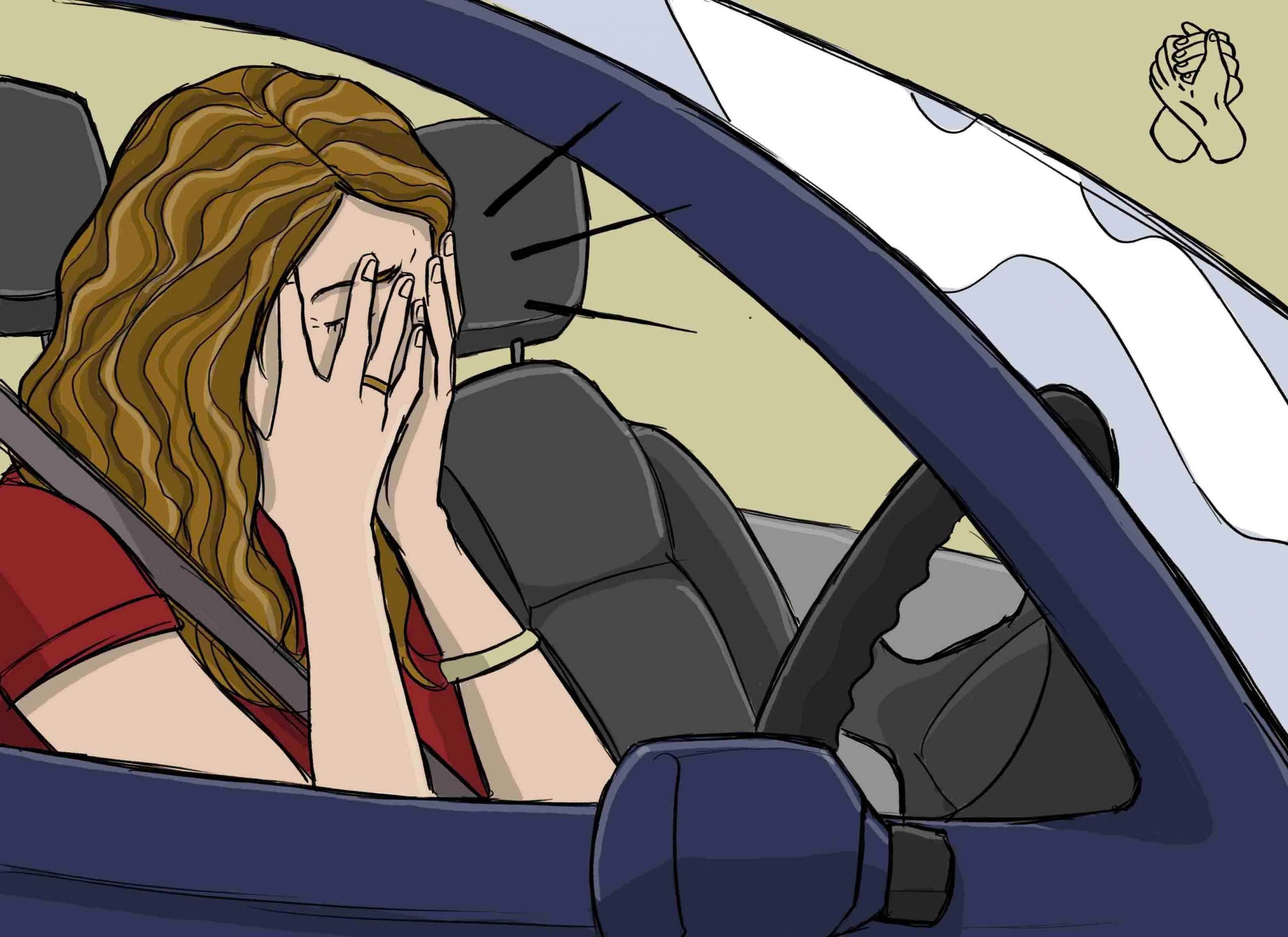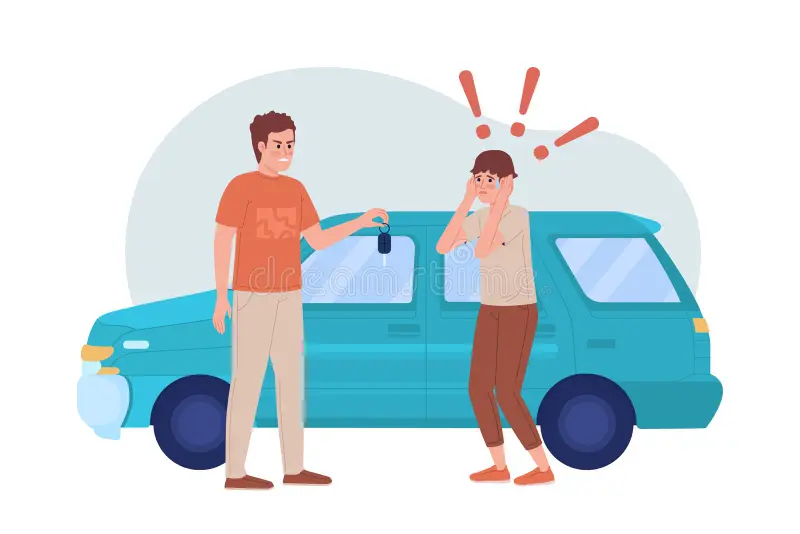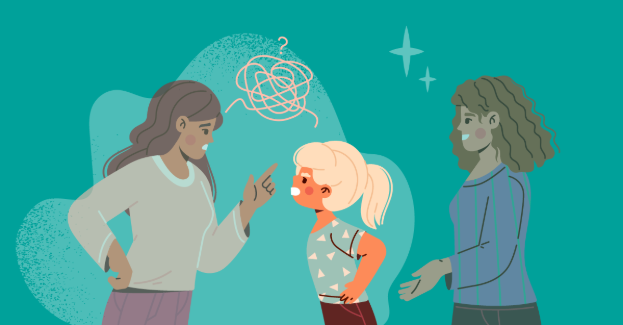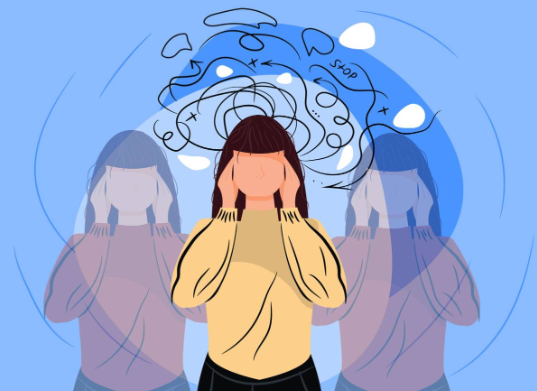Feeling anxious in a car as a passenger is more common than you might think. For many people, just the idea of sitting in the passenger seat can cause a racing heart, sweaty palms, or even panic attacks. Some feel a loss of control, while others might have had a bad experience in the past, like a car accident or a scary near-miss.
If you’re someone who gets nervous or anxious as a passenger, you’re not alone. The good news is, there are ways to manage and even overcome this anxiety. This article will guide you through simple, practical tips—backed with a little humor and a real-life example—to help you feel safer and calmer when you’re not the one driving.
Why Do I Feel Anxious in the Car?
Anxiety while being a passenger often comes from fear and lack of control. You’re not holding the steering wheel, so your brain may think, “If something goes wrong, I can’t stop it.” Sometimes, this kind of anxiety is linked to a past trauma like a car crash. It can also be part of PTSD (Post-Traumatic Stress Disorder) or other mental health issues like depression.
Some people also experience anger while stuck in traffic or witnessing poor driving from others. That anger can build up and trigger anxiety as well. Imagine sitting beside someone who brakes too late, swerves too much, or forgets turn signals. It’s enough to make you want to press an invisible brake with your foot—or scream silently into your seatbelt.
Real-Life Example: Sarah’s Story
Sarah, a 28-year-old woman from Toronto, used to love road trips—until one day, she was involved in a minor car accident while sitting in the front passenger seat. After that day, even short drives made her feel dizzy and sick to her stomach.
She avoided riding in cars for months. But eventually, she had to face it—because life doesn’t stop, and neither does Uber.
Sarah started slow. First, she sat in parked cars just to get used to the feeling. Then she began sitting in the backseat for short rides. She practiced breathing deeply and focusing on music. Now, she’s back to riding comfortably, and even enjoys long drives again.
Her story shows us that small steps can bring big change.
Step-by-Step Tips to Beat Car Anxiety
1. Talk to the Driver
Let your driver know you feel nervous. A supportive driver can make a huge difference. Ask them to drive smoothly and avoid sudden moves. No, you’re not being annoying—you’re just taking care of your mental health.
If you’re married and your spouse is a “fast and furious” type, maybe say, “Babe, could we drive like we’re in a Disney movie instead of an action film?” A little humor can lighten the mood and make the drive more relaxed.
2. Pick Your Seat Wisely
Some passengers feel better in the front seat where they can see the road, while others feel safer in the back. Try both and see what works for you. Avoid sitting in seats where you can’t see anything—it can make your anxiety worse.
3. Bring Comfort Items
Just like kids carry their favorite toys, adults can bring comfort items too. Whether it’s a stress ball, soft blanket, or calming essential oil like lavender, these small things can soothe your nerves.
4. Use Breathing Techniques
Take deep, slow breaths. Breathe in for 4 seconds, hold for 4 seconds, and breathe out for 6 seconds. Repeat this a few times. It signals your brain that you’re safe, even if your anxious thoughts say otherwise.
Bonus tip: If your driver thinks you’re sighing too much, just tell them you’re practicing “passenger yoga.”
5. Distract Your Mind
Distraction works like magic. Listen to your favorite songs or a podcast, talk to someone in the car, or even play games on your phone (as long as you don’t get car sick!). The goal is to take your focus off your fears.
EMDR: A Special Therapy for Deep Healing
If your anxiety is strong and linked to a traumatic experience, therapy might be your best friend. One powerful method is EMDR (Eye Movement Desensitization and Reprocessing).
EMDR is often used to treat PTSD, especially for people who’ve been through accidents or shocking events. During EMDR, a trained therapist helps you recall the trauma while guiding your eye movements in a certain way. This helps your brain “reprocess” the memory, so it becomes less painful and scary.
People who’ve gone through EMDR often say they feel lighter and less triggered by things that used to cause panic—like riding in a car. If your car anxiety feels connected to old pain, EMDR could be worth exploring.
What If My Anxiety Triggers Other Emotions?
Anxiety doesn’t travel alone. Sometimes it brings along its cousins—depression, anger, or even guilt.
You might feel depressed because you’re missing out on social events or family trips due to your fear. You might feel anger at yourself for being “too sensitive” or at others for not understanding. These feelings are valid—but they don’t have to stay forever.
The more you work on your anxiety, the more your confidence will grow. And as that happens, the feelings of depression and anger will fade too.
When Should I Seek Help?
If your anxiety stops you from living your life, it’s time to seek help. A therapist or counselor can guide you through it. You don’t have to go through this alone. And guess what? Just asking for help is a brave step already.
Final Thoughts
Car anxiety as a passenger may feel overwhelming, but it’s not a life sentence. With patience, support, and the right techniques, you can manage—and even cure—it.
Start small, celebrate your progress, and don’t forget to laugh a little along the way. Like when you reach your destination and realize your biggest accomplishment wasn’t arriving on time—but arriving calm.
One day, you’ll look back and wonder why you ever feared it. Until then, breathe deeply, hold your stress ball tightly, and maybe—just maybe—bring some snacks to bribe your driver to slow down.

